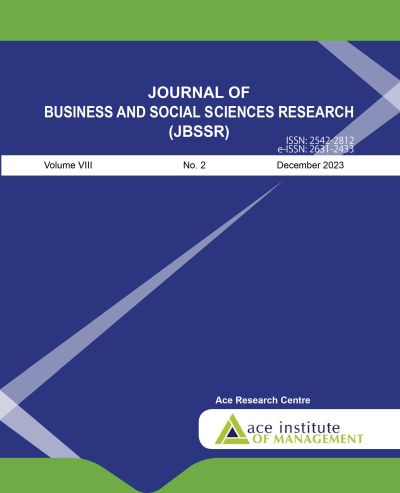Effect of Financial Literacy on Utilisation of Financial Services in Kaski District
DOI:
https://doi.org/10.3126/jbssr.v8i2.62130Keywords:
Exploratory factor analysis, financial literacy, structural equation modelling, use of financial servicesAbstract
Financial literacy is a key driver of financial inclusion, as people need the financial services that banks and other financial institutions offer. This study aims to examine the effect of financial literacy on the usage of financial services in Kaski district of Nepal. For this study, 400 sample households were chosen at a five percent margin of error, and the major decision maker for each household was chosen as the respondent. The researcher used close-ended, self-administered questionnaires to gather data. The researcher used descriptive statistics and inferential statistics such as frequency percentage distribution, exploratory factor analysis, and structural equation modelling. The study found a significant positive impact of financial literacy on the usage of financial services. This study concludes that usage of financial services among households in Kaski can be enhanced through increased financial literacy. Financial literacy programmes encourage people to use more financial services by providing adequate knowledge about financial products and services and their advantages and disadvantages. These results are very helpful to policymakers in increasing the usage of financial services through financial awareness programmes.
Downloads
Downloads
Published
How to Cite
Issue
Section
License
© JBSSR/AIM
Authors are required to transfer their Copyright to the Journal of Business and Social Sciences Research.




